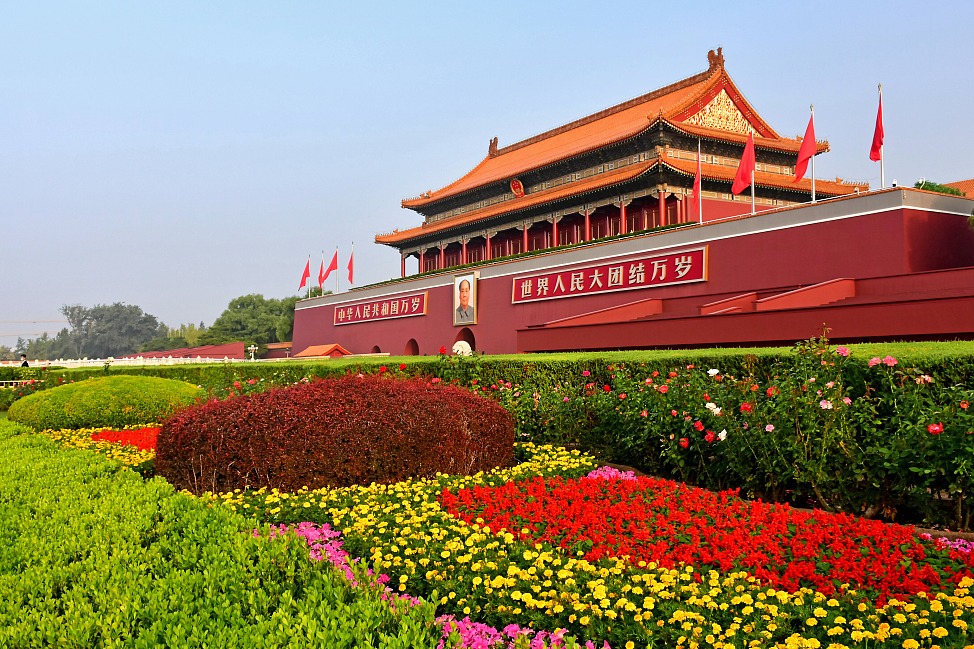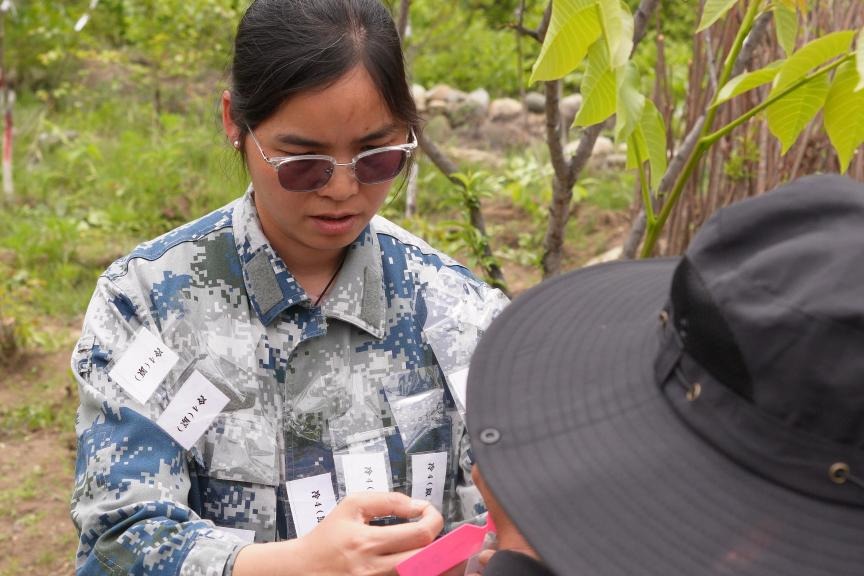Q&A: Beijing responds to new infection cluster


Note: The following are the responses from authorities to some of the top concerns about the recent COVID-19 outbreak in Beijing made at a press conference held by the Joint Prevention and Control Mechanism of the State Council on June 19. In case of any dispute over a discrepancy, the Chinese version is deemed to prevail.
Q: After the recent cluster outbreak of COVID-19 in Beijing, what measures have been taken by the customs authorities to prevent the virus being introduced into China via imported fresh produce?
A: The World Health Organization (WHO) has expressed its belief that, according to the existing investigation of coronavirus, there was no reported case of the virus being transmitted to humans by food consumption. The Food and Agriculture Organization (FAO) of the United Nations and the World Organization for Animal Health (OIE) both believe that the risk of transmission through the food trade was very low. Thus, they did not advise countries to impose COVID-19 related restrictions on international trade, including that involving food. As a member state of these international organizations, China upholds a scientific attitude and has adopted their suggestions. However, for caution's sake, while not wishing to affect the normal import trade, the General Administration of Customs (GAC) has arranged for novel coronavirus nucleic acid tests to be carried out through sample inspections of certain imported goods and articles and their related environment ever since February, with negative results in regard to all the samples.
In regard to the recent cluster infections in Beijing, the customs authorities have taken note that society is highly concerned about the safety of imported fresh produce. With a prudent and highly responsible attitude toward the people, the GAC has arranged for customs departments across the country to monitor cold chain fresh products imported from pandemic high-risk countries and regions, such as aquatic products, meat, frozen vegetables, aquatic animals, and time-sensitive or industrial products transported at low temperature. According to the data on the GAC's website, on June 18, customs across the country conducted tests for COVID-19 on 15,638 samples, with 3,508 being goods samples, 10,608 samples of the interior or exterior packing material, and 1,522 environmental samples. All samples tested negative for COVID-19.
Meanwhile, China's customs pay constant attention to the development of the global pandemic, and have fulfilled their function of ensuring the safety of imported goods. At the same time, they have strengthened communication with other countries. The GAC sent messages to 42 key countries, requesting their competent government departments and food producers to strictly follow food safety guidance for food businesses jointly issued by the FAO and the WHO, establish effective food safety management systems and take preventive measures to protect exported food from being contaminated with the novel coronavirus so as to jointly ensure the safety of the food trade.
The customs authorities will continue to make efforts on risk analysis and monitoring, strictly conduct inspection and quarantine, and fulfill their responsibility to ensure imported food safety.
Q: Experts say Beijing's current COVID-19 outbreak was caused by human transmission and contamination of goods or materials. Is it safe to buy vegetables, fresh seafood and meat in the market? What kind of contacts would contaminate them? Is it safe to eat food bought from Xinfadi wholesale market after May 30?
A: So far, there is no evidence that novel coronavirus can spread through food products, including seafood, via the digestive tract. According to research, the virus mainly spreads through respiratory droplets produced by COVID-19 patients and close contacts. Exposure to a high density of aerosol in a closed environment may also increase the chances of getting infected. Other transmission routes are yet to be confirmed.
To reduce potential risks, though, it is recommended to avoid touching raw fish or meat when buying groceries, and be aware of food safety while cooking meals. For example, we need to wash our hands thoroughly before and after cooking, use separate chopping boards for raw ingredients and cooked food, thoroughly heat up food and drinking water, peel fruits, and could disinfect cooking utensils and dishes through steaming them for 15 minutes. These are a few ways that can help reduce the risk of infection.
Q: In Wuhan, the coronavirus was first detected at a seafood market, and the outbreak in Beijing this time also started from a market. Why did the outbreaks start in this way? Is there any analysis of this aspect? Will the same thing happen in the future? If possible, how can we prevent the virus from spreading?
A: Most of the fresh food markets indeed feature complex personnel structure, wide logistics coverage, large passenger flows and a humid environment. Such factors bring about great difficulties and challenges when it comes to tracing contaminated products and managing exposed personnel once the environment is contaminated or an epidemic breaks out. For example, Xinfadi market in Beijing is the largest market for agricultural and sideline products in Asia, and supplies over 80 percent of the agricultural products needed by Beijing. It also radiates to neighboring provinces such as Hebei. Since the first case was discovered on June 11, Beijing has responded quickly, initiated a second level emergency response, and strengthened the management of communities and the movement of people entering and leaving Beijing. Efforts have been made to organize all necessary nucleic acid testing among people from key industries and areas, trying to discover all infected cases. Authorities also called for people to take proper protective measures, striving to control the outbreak at an early stage.
The general public should certainly strengthen personal protection measures as soon as this outbreak occurs, including being aware of cough etiquette, taking disinfectant wipes when going out, maintaining good hand hygiene, ensuring clean food and safe drinking water, washing hands carefully before and after handling food, and avoiding consuming any uncooked food or un-boiled water recently. People from regions at different risk levels can refer to the State Council's guidelines, especially the revised version, as well as the just released "Guidelines on the Prevention and Control of COVID-19 for Key Locations, Organizations and Groups of Low-Risk Regions in Summer" regarding the wearing of masks in the proper manner. Gatherings should be reduced, and people should better maintain the 1-meter social distancing rule. If you detect respiratory symptoms like fever, a cough and general fatigue, you should seek medical treatment while wearing a medical surgical mask, rather than go to work while feeling sick. You should also try to avoid public transportation, so as to reduce the risk of infection.
Q: Why do people leaving Beijing for business trips still need to adhere to a 14-day quarantine upon arrival and undergo another nucleic acid test, even though they have already taken the nucleic acid tests as required?
A: Since Beijing reported new cases of COVID-19, some local governments have put forth new policies, including conducting nucleic acid tests and requiring a 14-day quarantine for those who are from Beijing's medium- to high-risk areas and those that are related to Xinfadi market.
On June 16, Beijing raised its COVID-19 emergency response level to II from III. And people from medium- and high-risk areas and personnel related to Xinfadi wholesale market have been prohibited from leaving Beijing. Other Beijing residents should stick to the principle of avoiding "non-essential" travel out of the city. Beijing's residents who have to leave the city are required to take a nucleic acid test. Requirements were made to strengthen the management of people who are leaving Beijing; the measures that have been taken are as follows:
First, people who were in to the medium- and high-risk areas from May 30 to June 16, as well as personnel related to Beijing's Xinfadi market, are required to take the nucleic acid tests. Those who receive positive results on the nucleic acid test will be in quarantine. Those who are close to the suspected or confirmed cases, or the asymptomatic coronavirus carriers, if they have received negative results on the nucleic acid test, should be placed under a 14-day quarantine with medical observation in designated places. For other people who take the nucleic acid tests and receive negative results, they should be under enhanced health management via their workplace and communities. They should also be required to undergo a 14-day observation of their general health. And if they have symptoms like fever or cough, they should seek medical treatment.
Second, after June 16, people who need to leave Beijing must have negative results of a nucleic acid test taken within seven days or a health code carrying equivalent testing information. These people are allowed to move freely and in an orderly manner after arriving at their destination, provided that their body temperature is taken normally and personal protection is taken. All localities should no longer take restrictive measures targeting such people.
Third, those who were not tested before departing from Beijing for some special reasons should receive a nucleic acid test upon arrival at their destination. They will be allowed to move freely only if the result proves negative, the body temperature is normal and the personal protection adopted meets the standard set.





































